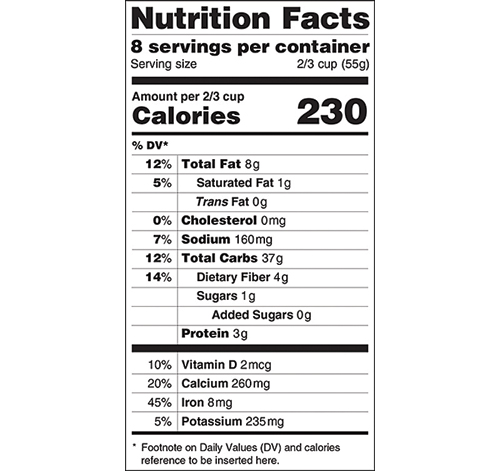Health: Changes coming to your food labels

Maybe you never realized or, as in my case, chose not to care, those small bags of chips and bottles of soda are not designed to be enjoyed in one sitting — at least not according to their nutrition labels.
A 20-ounce bottle of Coca Cola contains 2.6 servings, while a three-ounce bag of Lay’s Classic potato chips contains three servings of 15 chips each, according to product labels.
 The U.S. Food and Drug Administration is changing nutrition labels to bring them in-line with how products are actually consumed — which is required by federal law.
The U.S. Food and Drug Administration is changing nutrition labels to bring them in-line with how products are actually consumed — which is required by federal law.
The new labels will help consumers make better decisions on caloric intake, said Maryann Birmingham, a nutrition educator with Cornell Cooperative Extension of Suffolk County. She added, however, that the new labels won’t appear on products for two years, giving industry experts ample time to comment on the FDA’s proposed changes before they show up on store shelves.
“It’s all about choices,” Ms. Birmingham said. “The hope with the new labels is that people will be able to make more educated ones.”
“You have to be a mathematician to understand what it is you are consuming these days,” she added, noting different serving size measures, such as ounces versus cups.
Those sizes don’t necessarily mean anything to the average consumer, especially in the context of bulk items like a tub of ice cream or a box of cereal, she said.
The new labels will recalculate serving sizes, calories and added sugar content.
Recommended calorie intake is currently based on a 2,000-calorie-a-day diet, but that varies according to the individual, Ms. Birmingham said.
For example, a 40-year-old woman who is 5 feet 4 inches tall and weighs 160 pounds should consume about 1,700 calories per day, according to a caloric calculator on Cornell University’s website — and that number changes with physical activity.
On the new labels, both the serving size and calorie count will be in bold type.
In addition, new labels will specify the amount of added sugars, which are added during food production and account for about 16 percent of the average American’s daily calorie intake, according to the FDA.
These added sugars are empty calories with no nutritional value, Ms. Birmingham said. Instead, naturally occurring sugars from fruits and vegetables are what people should be eating.
“Think apples verse applesauce,” she said.
According to the FDA’s estimate, Americans consume about 130 pounds of added sugars yearly. Ms. Birmingham urges people to see what a pound of sugar looks like next time they’re in the grocery store.
“Until they do a hands-on activity, measuring out the sugar or fat, people are not aware of the things we’re eating on a daily basis,” she said.
The new labels will feature nutritional values more prominently and will include potassium and vitamin D, which are not currently listed and in which many people are deficient, according to the FDA.
Vitamin D helps the body absorb calcium to build healthy bones and is especially important among women and the elderly. Potassium helps to lower blood pressure and prevent hypertension, nutrient experts say.
“We have evidence that people are not consuming enough of these nutrients to protect against chronic diseases,” said Jessica Leighton, senior nutrition science and policy advisor for the FDA’s Office of Foods and Veterinary Medicine, in a media release describing the new labels.
Obesity and heart disease, among other chronic diseases, are leading public health problems, prompting the need for the new labels, Ms. Leighton said.
Ms. Birmingham warns that people shouldn’t wait two years to start paying more attention to what they eat and suggests they begin educating themselves now. For information on Cornell Cooperative Extension of Suffolk County’s nutrition education programs, contact Ms. Birmingham at 631-727-7850, ext. 356, or [email protected].
Got a health question or column idea? Email Carrie Miller at [email protected]. Follow her on twitter @carriemiller01.








